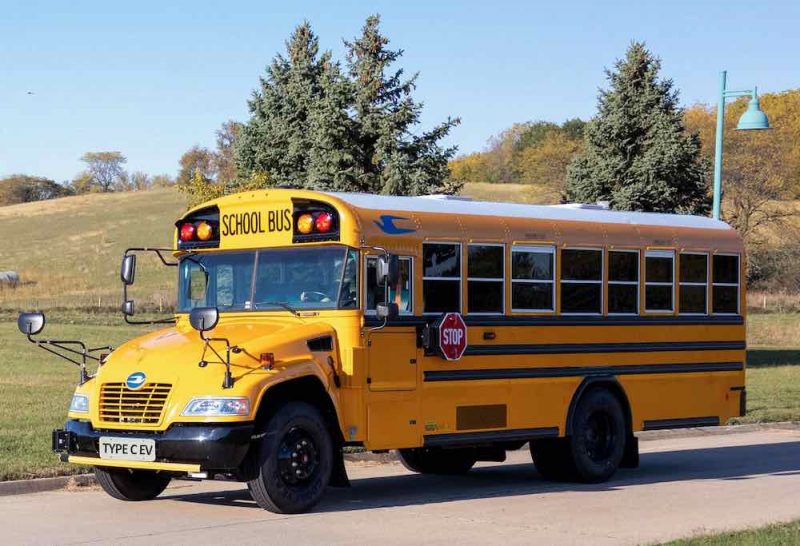Australia founded electric truck company SEA Electric has begun piloting another zero-emission school bus with its pure battery-electric Blue Bird Type C model.
SEA Electric, which was founded in Australia in 2012, but has since moved its headquarters to California, announced this week that it was piloting its Blue Bird Type C powered by a SEA-Drive 120b power-system for another school in the US.
The pure battery-electric Type C model school bus can accommodate up to 84 passengers and offers maximum power of 335hp and peak torque of 1,845lb-ft. It has a range of up to 150 miles (241-kilometres) between charges thanks to a 138kWh capacity battery and both standard and fast charging options – it also features vehicle-to-grid (V2G) capability.
“More and more, schools are looking to the future with zero emissions school bus technology, reducing their carbon footprint while enhancing the air quality around their campuses and local areas,” said Mike Menyhart, SEA Electric’s president for the Americas and chief strategy officer.
“In the history of SEA Electric, we have already seen an incredible movement to switch to electric school bus technology, and we are proud to service the marketplace with the most cost-effective all-electric power system in the world.
SEA Electric has made significant strides into the United States zero-emission school bus space. In December 2021, the company secured a deal with American school bus dealer Midwest Transit Equipment to convert 10,000 buses to electric drivetrains as well as add vehicle-to-grid (V2G) charging capacity.
American school bus manufacturer Blue Bird already sells its own electric school buses – such as the two the company recently sold to the Fairfax School District in Vermont in February, both of which are powered by the Cummins PowerDrive EV system and also include vehicle-to-grid capability.
The importance of including V2G technology with American electric school buses was highlighted late last year when an electric school bus in the US state of Massachusetts, equipped with a battery from American automotive and energy storage company Proterra, successfully delivered power back to the grid for over 50 hours over the course of the summer.
The Thomas Built Buses Saf-T-Liner C2 Jouley electric school bus discharged nearly 3MWh of electricity back into the grid over the course of 30 separate instances.
“By delivering stored clean energy back to the grid when it’s needed most, electric school buses can help create a more resilient local power system and reduce the dependence on expensive fossil fuel power plants,” said Gareth Joyce, the president of Proterra.
“Switching to zero-emission, electric school buses signals a transformational shift towards clean transportation and clean energy to help protect the health of our children and the communities they live in.”
Joshua S. Hill is a Melbourne-based journalist who has been writing about climate change, clean technology, and electric vehicles for over 15 years. He has been reporting on electric vehicles and clean technologies for Renew Economy and The Driven since 2012. His preferred mode of transport is his feet.

